Chapter 1 (Introduction to Ecology)
1/63
Earn XP
Description and Tags
Learning Objects/ Slides
Name | Mastery | Learn | Test | Matching | Spaced |
|---|
No study sessions yet.
64 Terms
ecology
the study of the distribution and abundance of organisms, the interactio between organism, the interaction between organism and their environment, and structure and function of ecosystems
1995 Minnesota with the frogs
Parasites and Pesticides
Upon examination of the
frogs, it was discovered that
ALL deformed amphibians
had a parasite called
Ribeiroia ondatrae
individual approach
understands how adaptations, or characterisitcs of an individual’s morphology, physiology, and behavior enable it to survive in an environment
population approach
examines variation in the number, density, and composition of individuals over time and space
community approach
understands the diversity and interactions of organisms living together in the same place
ecosystem approach
examines the interrelationships among the living organisms, physical features, bio-chemical processes, natural phenomena, natural phenomena, and human activities in ecological communities
types of ecology experiments
laboratory
small-scale field
large-scale field
replication
random assignment of treatments statistical analysis
abiotic
relating to or resulting from non-living factors in an environment, such as temperature, water, sunlight, soil, air, and minerals.
biosphere
the global sum of all ecosystems, where all plants, animals, microorganisms, and humans live and interact with the air, water, and soil.
control group
the group in an experiment that does not receive the treatment or experimental condition. It is used as a baseline for comparison to see the effect of the variable being tested.
3 reasons to why we care about ecology
the products obtained from ecosystems
necessary for the production of all other ecosystem services
benefits obtained from the regulation of ecosystem processes
advantages and disadvantages of using field observations
advantages:
cost effective
direct data collection
minimal interference
disadvantages
lack of control
observer bias
limited repeatability
advantages and disadvantages of using lab experiments
advantages
high control over variables
easier to replicate
faster results
disadvantages
ethical concerns
artificial setting
expensive equipment and setup
advantages and disadvantages of using field experiments
advantages
real world setting
natural behavior
useful for social research
disadvantages
cost
low control over variables
replicability issues
importance of hypotheses
importance of controls
importance of replication
importance of data analysis
two reasons why amphibians are important
factors that affect formation of deformities in frogs and how they are interrelated
how ecology can be studied on different spatial and temporal scales
How to interpret the results of a scientific study
most important PHYSICAL factors for where an organism lives
temperature and water
others: light and ocean pressure
most important CHEMICAL factors for where an organism lives
salinity, pH, oxygen
others: carbon dioxide, nutrients, toxins
weather
current conditions (temperature, precipitation, humidity, cloud cover)
temporal scale: minutes to weeks
climate
long-term description of weather, based on averages and variation measured over decades
temporal scale: decades to centuries
continentality
inland= greater of temperature swings
mountains i
block moisture dude to rain shadwo
warm air is ___ dense than cold air
less dense
there is a ___ atmospheric pressure at the equator than at 30 degrees North latitude
lower
air cools as it _____
expands
what areas will have high humidity
0 degree latitude (equator)
subpolar low (60 degrees latitude)
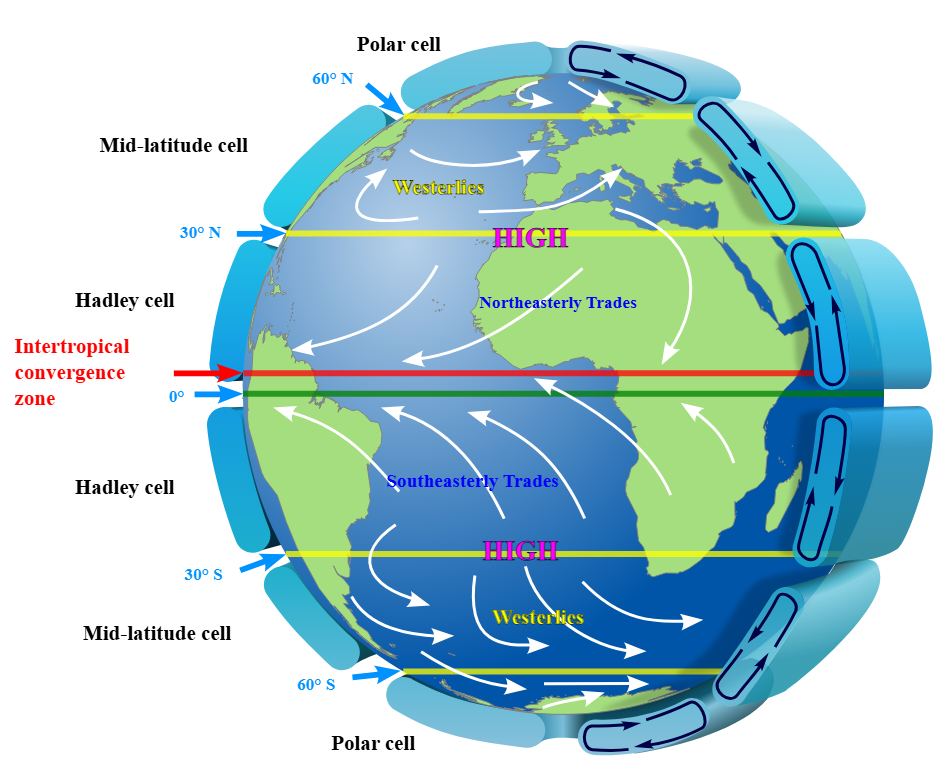
what areas will have low humidity
30 degree latitude (descending dry air from hadley and Ferrel cells, deserts)
Poles (90 degrees latitude) → cold, descending air
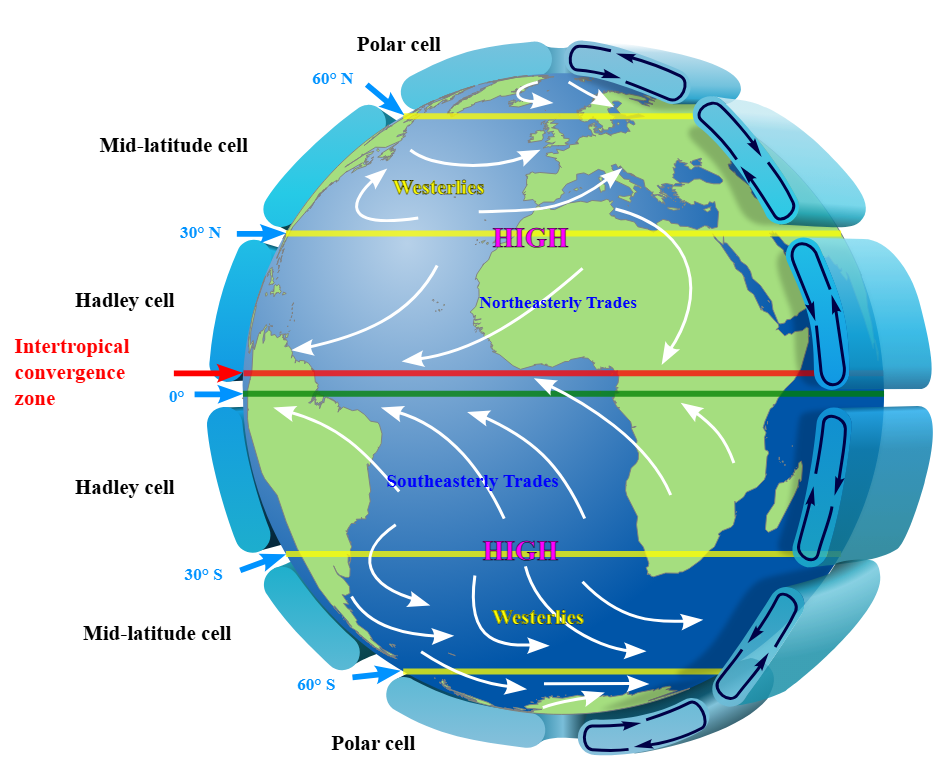
what areas will have high pressure
low humidity areas (dry) = high pressure zones = descending air → the air is sinking and pressing down on the surface
- 30 degrees (subtropical highs)
- 90 degrees (poles)
what areas will have low pressure
high humidity areas = low pressure zones = rising air → the air is moving upward and away from the surface
- 0 degrees (equator)
- 60 degrees (subpolar lows)
atmospheric circulation cells
determine Earth’s major climate zones
temperature differences drive what?
atmospheric and oceanic circulation
winds flow from areas of ___ pressure to ____ pressure
high to low
winds moving towards the equator will always bend to the ____
west
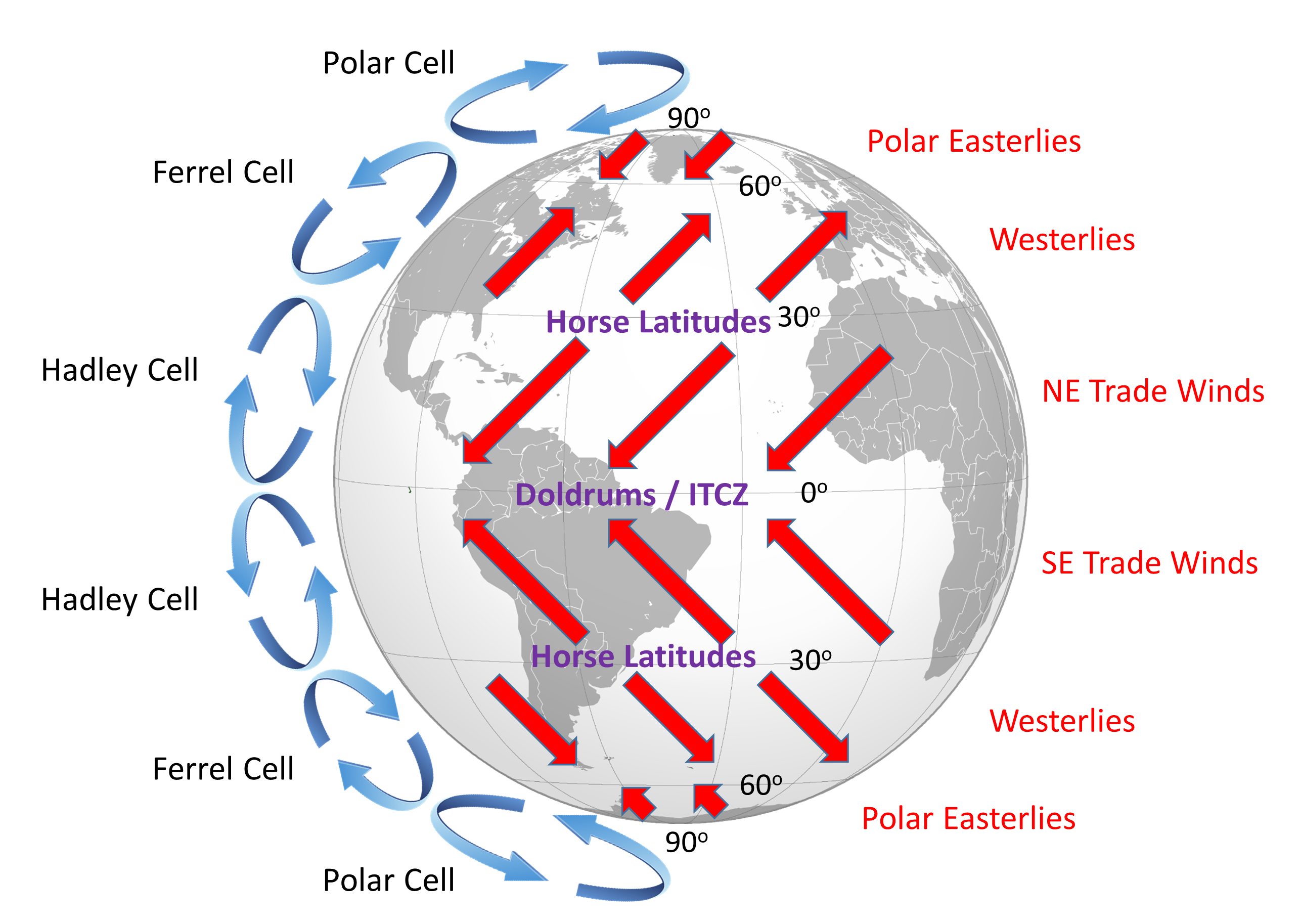
winds at the equator will always bend to the ____
east
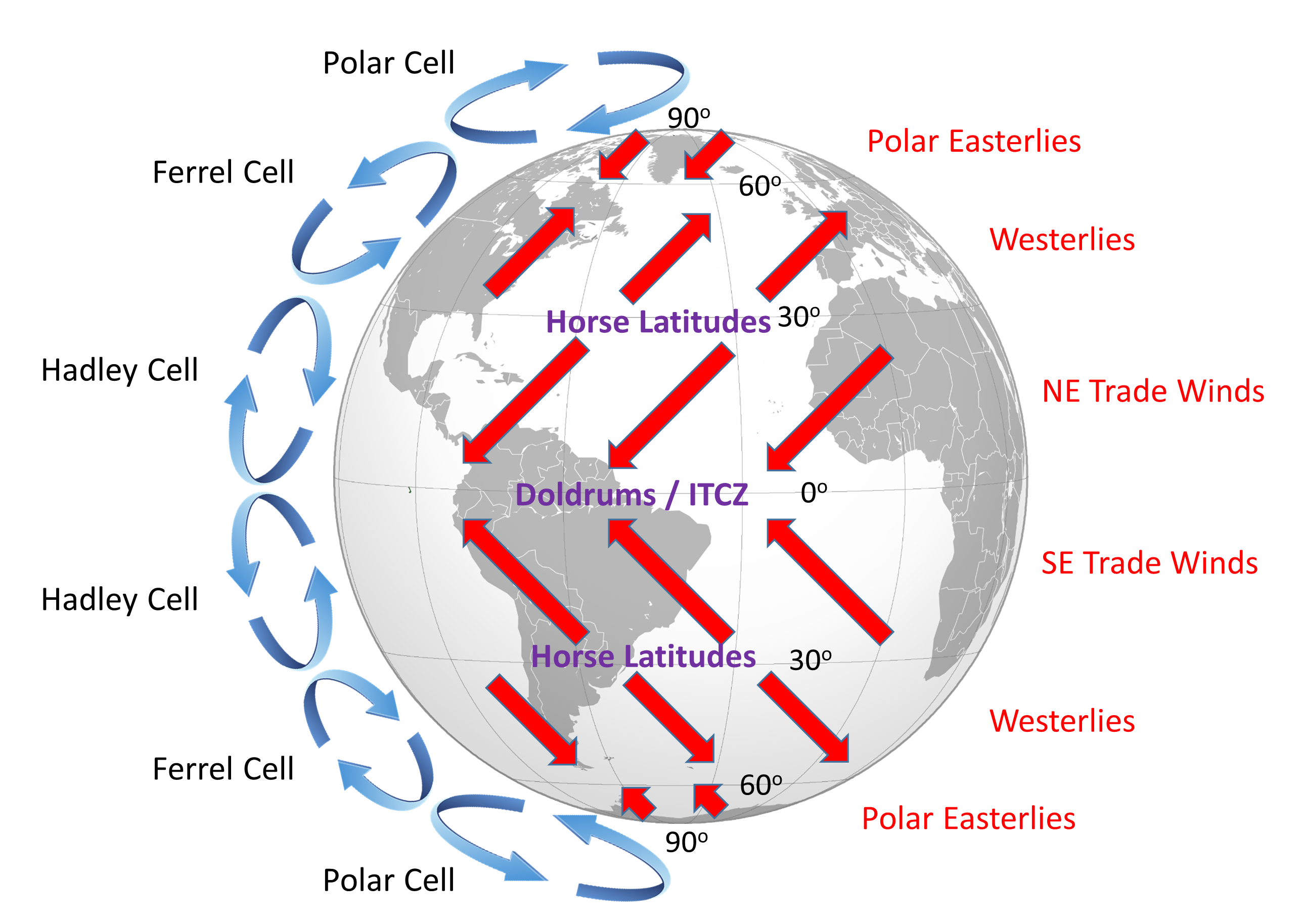
winds appear deflected due to rotation of earth
coriolis effect
within the same tropical rainforest, predict what the temperature and precipitation profiles will look like at the same longitude, equal distances above and below the equator?
at 30 degrees S latitude we would expect
low humidity and high pressure
winds that are moving from the poles towards the equator
bend to the east in the northern hemisphere and to the west in the southern hemisphere
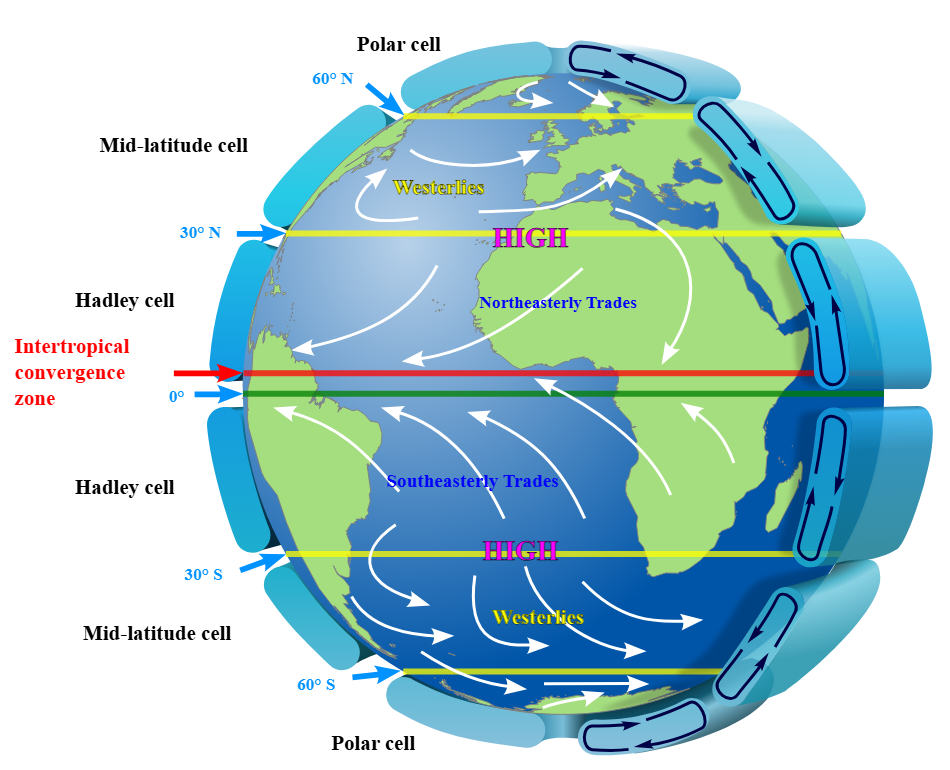
what would happen if the Earth wasn’t tilted
the seasonal changes would be more extreme
if the average temperature on Earth increased, what effect would this have on the distribution of boreal forests in the northern hemisphere
The southern edge of the boreal forests would move northward
what is the main reason earth has different climates and seasons
The tilt of earth’s axis stays the same but this tilt causes variation
at 30 degrees S laitude, you would expect
high pressure, little humidity
intertropical convergence zone (ITCZ)
where the two hadley cells meet
gulf stream
bring warm water from equator to poles
California current
brings cold water from the poles to equator
heat capacity
a physical property of matter, that is defined as the amount of heat supplied to a material to produce a unit change in its temperature
biome
large-scale terrestrial communities shaped by physical environment, categorized by plant forms. determined by climate (both averages and seasonal variation)
convergent evolution
a phenomenon in which 2 species descended from unrelated ancestors look similar because they have evolved under similar selective forces
what type of radiation does the sun emit
shortwave
What type of radiation does the earth emit
longwave
albedo
= .32
proportion of solar radiation being reflected by a surface
positive feedback
a change in a system causes more changes in the same direction, making the effect stronger or bigger
negative feedback
a change in a system triggers a response that reduces or reverses that change, helping system stay balanced or stable
climate envelope
a range of conditions over which a species occurs; can predict response to climate change
acclimatization
adjusting to stress through behavior or physiology
- short term
reversible process
adaptation
Individuals with traits that enable them to cope with the stress are favored; over time, these genetic traits become more frequent in the population
- long term
genetic response
endotherms
produce their own heat
ectotherms
rely on heat from the environment